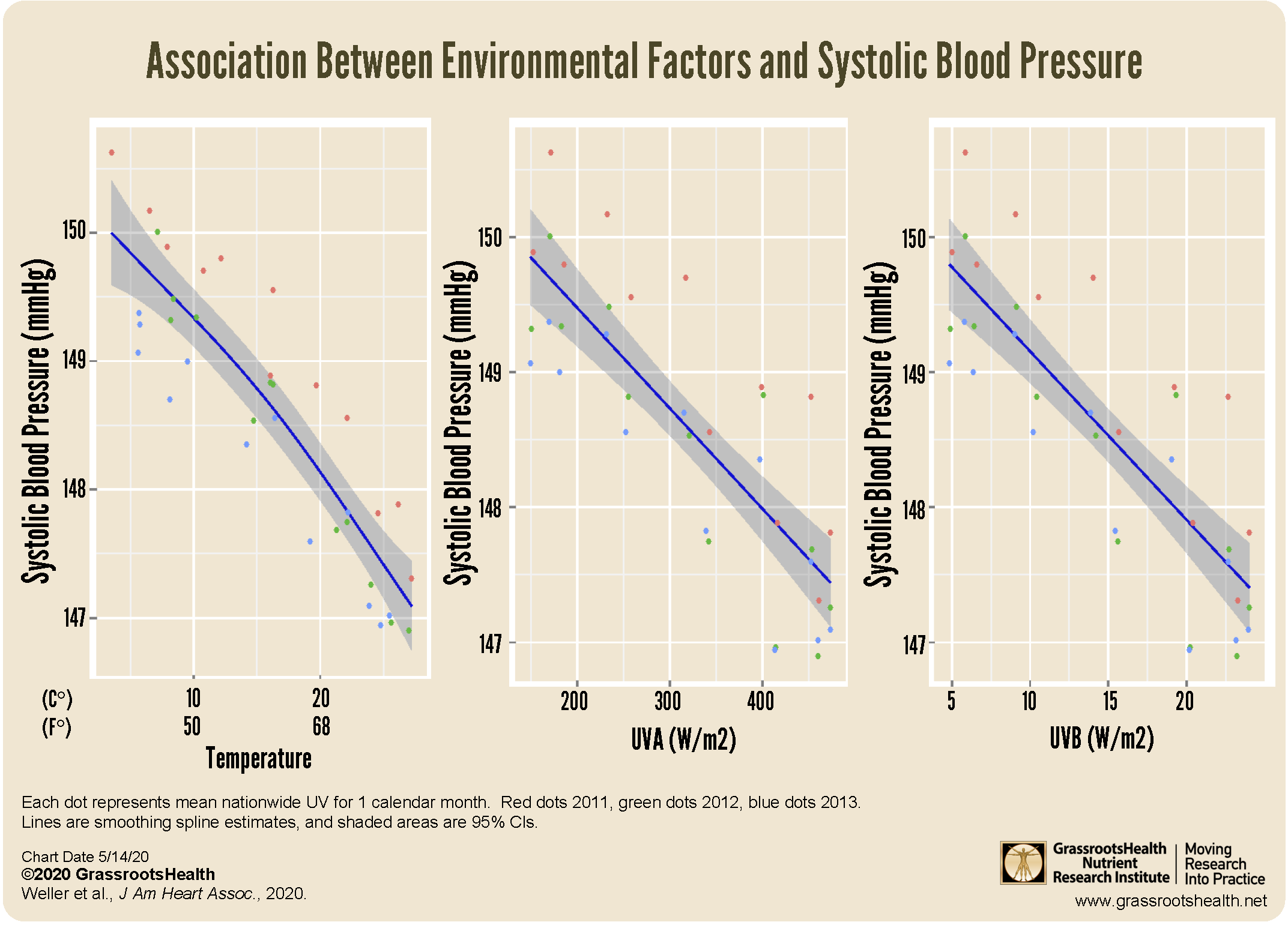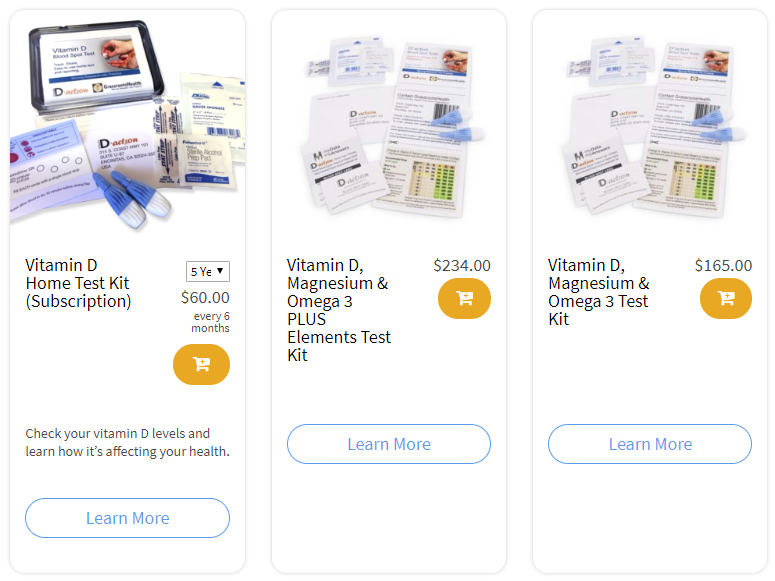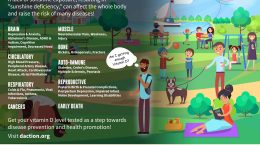Published on May 18, 2020
In previous blog posts we mentioned the benefits of sunshine that extend beyond vitamin D production. In addition to vitamin D-producing UVB light, the sun also emits UVA light which initiates the production of nitric oxide in our bodies. Benefits from increased nitric oxide production include dilated coronary arteries, lowered blood pressure, and reduced risk of angina – a condition characterized by severe chest pain and inadequate blood supply to the heart.
 Dr. Richard Weller, a world renowned dermatologist and researcher in the field, gave a TED talk about the benefits of sun exposure for nitric oxide production and reduced blood pressure. From the perspective of a dermatologist, he mentions the prevalence of heart disease compared to skin cancer and explains why the pros of sunshine exposure may outweigh the cons. Of course, people need to be careful not to burn or spend too much time in the sun, but the benefits that we do get from the sun may support a reduction in cardiac events due to improvements in overall blood flow.
Dr. Richard Weller, a world renowned dermatologist and researcher in the field, gave a TED talk about the benefits of sun exposure for nitric oxide production and reduced blood pressure. From the perspective of a dermatologist, he mentions the prevalence of heart disease compared to skin cancer and explains why the pros of sunshine exposure may outweigh the cons. Of course, people need to be careful not to burn or spend too much time in the sun, but the benefits that we do get from the sun may support a reduction in cardiac events due to improvements in overall blood flow.
Findings from recent studies
A study published by Weller et al. in 2020 tested if environmental UV exposure had an effect on systolic blood pressure (SBP) in a cohort of over 340,000 chronic hemodialysis patients and found that temperature, UVA, and UVB light were all inversely related to SBP. In addition, the authors found that pre-dialysis SBP varied by season and was approximately 4 mm Hg higher in black patients than white patients. The results of this study raise the concern that insufficient sun exposure may be a risk factor for hypertension in the general population, and even more so for the black population.
A study from Harvey et al. (2019) found that the incidence of death from heart attack in Sweden, over the time frame of 1987 through 2009, varied by season and latitude. (The range of latitude in Sweden is from 55-69°N.) For men, every 1° of latitude northwards corresponded with a 1.3% increase in death related to heart attacks; for women, a 0.6% increase. Additionally, the incidence of death from heart attacks was highest in the winter months and lowest in the summer months. The authors suggested vitamin D and nitric oxide as two potential factors contributing to their findings that summer months and more southern latitudes had less death from heart attack than winter months and more northern latitudes.
This research suggests that avoidance or lack of sunshine may be a risk factor for increased blood pressure and death from heart attacks.
Are You Getting Enough Vitamin D to Help Yourself?
We’re in a time of great crisis that could be greatly affected by making sure you and everyone you know has a serum level of at least 40 ng/ml. Help us help you.
Do you know what your vitamin D level is? Be sure to test today to find out, and take steps to keep it within a target of 40-60 ng/ml or 100-150 nmol/L! Give your immune system the nutrients it needs to support a healthy you and protect yourself from unnecessary diseases.
GrassrootsHealth Nutrient Research Institute is preparing to do a Community RCT with the use of our myData-myAnswers nutrient health system that over 15,000 people are already using for their health. We will demonstrate how one can use the Nutrient Research Model established by Dr. Robert Heaney to establish the effect of vitamin D serum levels of at least 40 ng/ml (100 nmol/L) on risk reduction with different ethnicities in the population. Please let us know if you’re interested in helping sponsor this project.
Through GrassrootsHealth Nutrient Research Institute, you can also test your essential elements magnesium, copper, zinc and selenium, toxins such as lead, mercury and cadmium, as well as your omega-3 levels, inflammation levels and thyroid stimulating hormone (TSH) level. Find out your levels today! Log on to the test selection page (click the link below) to get your tests and see for yourself if your levels can be improved.
Make sure you track your results before and after, about every 6 months!
Click Here to Access the Test Page
How can I track my nutrient intake and levels over time?
To help you track your supplement use and nutrient levels, GrassrootsHealth has created the Personal Health Nutrient Decision System called

For each specific supplement, you can track what days you take it, how much, and many other details. This will help you know your true supplemental intake and what patterns of use work for you to reach and maintain optimum nutrient levels. Check it out today!








